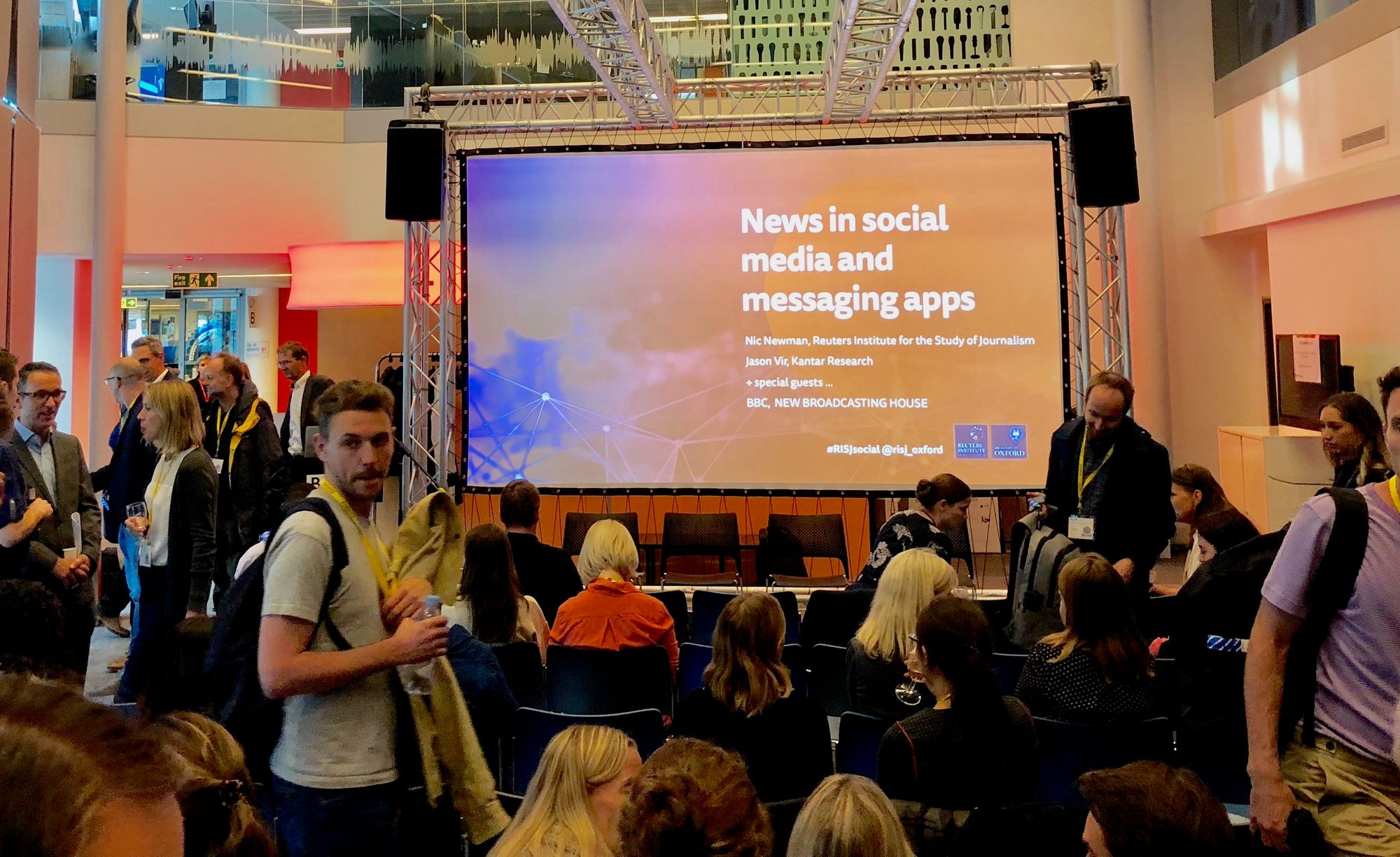
Kathryn Geels: Accelerating Audience Engagement
In the closing news:rewired session, we heard what the Engaged Journalism Accelerator has learnt about audience engagement so far.
The closing keynote of the March 2019 news:rewired was by Kathryn Geels, director of the Engaged Journalism Accelerator. Here are my notes from the session.
About the Engaged Journalism Accelerator
Engaged journalism has a particular benefit to journalists because it builds trust with communities, and enhances the sustainability of journalism.
The European Journalism Centre was established in 1992, and its core focus this year is resilience: making journalism both more sustainable and adaptable. They offer grants, fellowship programmes, and events among other things. The Engaged Journalism Accelerator is a €2m fund, and runs until December this year. They’re hoping to extend it beyond that, but right now they’re planning until the end of the year.
They have three core objectives:
- Supporting
- Connecting
- Inspiring.
They’re supporting 12 news organisations with grants - up to €50,000 each. They selected with a fairly robust set of criteria, and only after the collection of a solid evidence base about each organisation. That baseline of information will allow the Accelerator team to track how the supported organisations have managed to hit their objectives. The partners fill in progress and impact forms as they go, that allows them to share information through the scheme with other supported organisations.
The Accelerator runs a mix of closed and open events - with a big one planned for Berlin in June. They’re developing an ambassador network, of six or seven organisation in countries where they’re not directly supporting anyone with grants.
They have monthly community calls - once a month on a Thursday at 3pm GMT - and are compiling a list of organisations practicing engaged journalism.
They inspire with stories on the website, and a fortnightly newsletter called Engagement Explained.
Here's more from Kathryn about how you can get involved.
What they’ve learnt so far

1. Prioritise internal culture change
It’s not just one person's role to do community engagement - it’s everybody’s role. You need to adapt the culture around that idea, not just think about technology. How do you activate your community as citizens? What’s the public value in what you’re doing beyond the transaction?
2. Look at other industries
Don't just look at how journalists engage - look outside. There’s plenty to learn from social innovation around the craft beer movement, for example. (Editor's note: this is critical, and missed by so many working in this field. We have a habit of being desperately inwardly-focused.)
3. Face value
Face-to-face is a key driver in building trust and developing connection. Yes, there’s more effort involved, but it has a huge pay off in the end.
4. Avoid parachuting into communities
Just dropping into a community, doing a story and moving on is quite detrimental to that community - or at least to your relationship with them. Look to be constantly and consistently working and engaging with them.
5. Internal R&D
We struggle as an industry to understand and articulate the relationship between community engagement and the financial health of the industry. We need to come together and develop a framework for measuring that.
6. Language and accessibility
Be transparent about your processes, and explain the fundamentals of journalism: what you’re doing and why. Measure your success in how your community talks about you.
Important point from @girlondon at #newsrw about how the language we use as journalists may be different to that used in the communities we serve, and there should be more attention to what works for building engagement. #EngagedJournalism
— Seán Dagan Wood (@SeanDaganWood) March 6, 2019
They have banned certain words from their discussions of the programme. They say “news organisation”, “publisher” or “publication” not “newsroom”. Many emerging publications don’t really have a newsroom. “Engagement” isn’t around the traditional metrics of audience engagement, but working with the community.
They use “resilience” instead of “sustainability”. It’s not just about sustaining the journalism, but adapting it to change.
“Communities” and “users”, not “audience” and “readers”. The former words imply a two-way relationship, the latter ones a broadcast, one-way relationship.
.@catalinacma and I making a cameo appearance at #newsrw, courtesy of @girlondon’s presentation (h/t @johncthompson) 👀 pic.twitter.com/EcGBkuPrwO
— Mădălina Ciobanu (@madalinacrc) March 6, 2019
- Read more posts from news:rewired
- Read more about Audience Engagement
Sign up for e-mail updates
Join the newsletter to receive the latest posts in your inbox.









